25 Days - 300 Hour Yoga Teacher Training Course in Bali, Indonesia
The level of yoga course suitable for aspirants of Intermediate to Advanced level practitioners is the 300 Hours Yoga Teacher Training Course.
You can join the course if you are already aware of yoga or is in practice. In simpler words, the practice is for you if you are having a prior experience in this. You can't just join it as a Beginner.
You should either have knowledge of it or hold a degree in yoga before. The 300 Hours Yoga in Bali upgrades your skills and knowledge, making you better than before.
Some of you have already gained a degree as a Yoga Teacher with the 200 Hours Yoga TTC but now it's time to build yourself as a more dynamic and professional yoga teacher. For this, yoga for 300 Hours is the best option one can go for.
The course is set as per the standards of Yoga Alliance, USA. It also means that once you complete the course, you become eligible to register yourself as an RYT-300 or 300 Hours Registered Yoga Teacher. The course is conducted by highly registered teachers and instructors of Maa Shakti Yog, Bali.

Yogic Food
- 3 meals a day (100% Veg Organic)
- Water/Coffee/Tea/Detox Juices
- Vegan and Gluten-Free
- Seasonal vegetables
- Yogic diet
- Other dietary requirements on request

Accommodation
- Dining Area
- Environmentally friendly
- Luggage Room / Storage
- Multilingual staff
- Garden/Restaurant

Easy to Access
- Cafe nearby
- Restaurant nearby
- Books & Stationery store
- Convenience/Grocery store nearby
- Cyber (Internet) Cafe nearby
- Tour & Travel agencies nearby

Outdoor Excursions
- Bali's traditional ceremony
- Traditional Temple
- Beach
- Ubud Monkey Forest
Daily Yoga Schedule:
- TIMING ACTIVITES
- 06:00 - 07:30 Ashtanga
- 07:45 - 08:45 Pranayama
- 08:45 - 09:45 Breakfast
- 10:00 - 11:30 Anatomy & Alignment
- 11:45 - 12:45 Teaching Methodology
- 01:00 - 02:00 Lunch
- 15:00 - 16:00 Yoga Philosophy
- 16:15 - 17:45 Asana (Hatha & Vinyasa)
- 18:00 - 18:45 Meditation
- 19:00 Dinner
300 Hour Yoga TTC Syllabus:
Asana is a Sanskrit word that means, "Yogic Postures or Movements". Traditionally defines, asana means "Comfortable Seat", which means, it is a seated posture used in meditation.
Yoga poses that you will learn in 300 hour yttc.
- Tadasana (Mountain Pose)
- Trikonasana (Triangle Pose)
- Virabhadrasana I (Warrior I Pose)
- Virabhadrasana II (Warrior II Pose)
- Parsvakonasana (Side Angle Pose)
- Prasarita Padottanasana (Wide-Legged Forward Bend)
- Uttanasana (Standing Forward Bend)
- Adho Mukha Svanasana (Downward-Facing Dog)
- Balasana (Child's Pose)
- Bhujangasana (Cobra Pose)
- Dhanurasana (Bow Pose)
- Setu Bandha Sarvangasana (Bridge Pose)
- Salabhasana (Locust Pose)
- Ustrasana (Camel Pose)
- Paschimottanasana (Seated Forward Bend)
1st Week
- Pawanmuktasana series A
- Surya Namaskar ( Hatha)
- Virbhadrasana A & B
- Utthita Trikona asana
- Parvakonasana
- Parivritta parsvakonasana
- Parivritta Trikonasana
- parsvaottanasana
Sitting postures
- Bhardwaj asana
- Merudanda vakrasana
- Ardha matsendrasana
- Ardha ustrasana
- Bhujangasana
- Ardha salbasana
- Paschimottasana
- Janusirsasana
- purvottansana
- pawan muktasana series B
2nd Week
- pawan muktasana C / A
- Surya namaskar B
- Trikonasana
- Parsvakonasana
- Virbhadrasana A
- Virbhadrasana B
- Ardha chandrasana
- Virbhadrasana C
- Utthita hasta padangusthasana A/ B
- Vriksasana
- Garudasana
Sitting postures
- Marichyasana A
- Marichyasana B
- Marichyasana C
Back bending postures
- Ustrasana
- Rajkapottasana
- Dhanurasana
- Chakrasana
- Setubandhasana
Forward fold
- Paschimottanasana
- Janu sirsasana
- Triangmukha ekapada paschimotanasana
- Gatyamal paschimotanasana
- purvottanasana
- Inversions
- Sarvagasana
- Core exercises
3rd Week
- Sun salutation A/ B/ C (Hatha yoga)
- Sequencing
- Virbhadrasana A & B
- Trikonasana
- Parivrtta Trikonasana
- Parsvakonasana
- Parivrittaparsvakonasana
- Arm-balancing
- Bakasana
- Mayurasana
- Eka padabaka dhyanasana
- Parsva bakasana
- Dwi hasta bhujasana
- Hamasana
- Vashisthasana
- Vrischikasana
- Kaundilyasana
- Astavakrasana
- Inversions
- Sarvangasana
- Sirsasana
- Halasana
- Karnapidasana
- Matsyasana
- Savasana
- Teaching methodology
Pranayama, also known as breathing exercise is the foundation of yoga practice. "Prana" means breath and "Ayama" means to control; on combined, "Pranayama" means "to control or hold the breath".
The pranayama syllabus for a 300 hour yoga teacher training typically covers the following techniques and concepts:
- Introduction to Pranayama - meaning, benefits, and precautions
- Anatomy of Breathing - understanding the respiratory system and diaphragmatic breathing
- Nadi Shodhana Pranayama (Alternate Nostril Breathing) - techniques and variations
- Kapalabhati Pranayama (Skull Shining Breathing) - techniques and variations
- Ujjayi Pranayama (Victorious Breath) - techniques and variations
- Bhramari Pranayama (Bee Breath) - techniques and variations
- Sheetali Pranayama (Cooling Breath) - techniques and variations
- Sheetkari Pranayama (Hissing Breath) - techniques and variations
- Bandhas (Energy Locks) - understanding the three bandhas and their benefits
- Mudras (Gestures) - understanding the importance of mudras in pranayama practice and their benefits.
Observing your deep breaths which facilitate to still your mind for a few minutes, where it is away from all the unnecessary aspects; this is meditation. There are mainly 4 types of meditation styles you'll focus on, i.e., Traditional Himalayan Meditation, Healing Meditation, Crystal Meditation, and Sound Meditation.
The meditation syllabus for a 300 hour yoga teacher training typically covers the following :
- Introduction to meditation and its benefits
- Types of meditation: concentration, mindfulness, loving-kindness, etc.
- Techniques of meditation: breath awareness, body scan, visualization, mantra, etc.
- Practice of meditation: sitting, walking, standing, lying down, etc.
- Obstacles in meditation and ways to overcome them
- Creating a personal meditation practice
- Teaching meditation to others: communication, instruction, sequencing, etc.
- Incorporating meditation into yoga classes
- Meditation in daily life: developing mindfulness, stress reduction, emotional balance, etc.
Chanting the powerful, spiritual mantras helps in the union of the body with the mind. It will surely give you a deeply philosophical experience.
The mantra chanting syllabus for a 300 hour yoga teacher training typically covers the following :
-
Introduction to Mantra Chanting: Understanding the significance of mantra chanting in yoga, the benefits, and how it can be used as a tool for relaxation and meditation.
-
Basics of Sanskrit Language: Introduction to the Sanskrit language, learning the pronunciation of Sanskrit alphabets and basic vocabulary.
-
Basic Mantras: Learning simple mantras such as 'Om' and 'Shanti' and their meaning and significance in yoga.
-
Mantras for Meditation: Learning mantras for meditation such as 'Gayatri Mantra', 'Mahamrityunjaya Mantra', 'Om Namah Shivaya' and more.
-
Bhakti Yoga: Understanding the devotional aspect of yoga, and how mantra chanting can be used as a tool for spiritual growth.
-
Group Chanting: Practicing mantra chanting in a group, understanding the power of collective vibrations and how it can enhance the benefits of mantra chanting.
-
Mantra Therapy: Understanding the therapeutic aspect of mantra chanting, how it can be used to alleviate physical, mental and emotional ailments.
-
Integrating Mantra Chanting in Yoga Classes: Learning how to integrate mantra chanting in yoga classes as a teacher, and how to make it an integral part of yoga practice.
Anatomy deals with the bodily structure of an individual and how to protect from injuries. In the yoga teacher training classes, they conduct the theoretical class of Anatomy too.
The Anatomy and Physiology syllabus for a 300-hour yoga teacher training program includes the following topics:
- Introduction to human anatomy and physiology
- The skeletal system and its importance in yoga practice
- The muscular system and its importance in yoga practice
- The respiratory system and its importance in pranayama
- The nervous system and its importance in meditation and yoga practice
- The circulatory system and its importance in yoga practice
- The digestive system and its importance in yoga practice and diet
- Common injuries and precautions in yoga practice
- Modifications and adjustments for different body types and physical conditions
The aim of this syllabus is to provide an understanding of how the human body works and how it relates to yoga practice. This knowledge can help yoga teachers to teach their students safely and effectively, and to make modifications and adjustments as necessary to meet the individual needs of their students.
The yoga teacher training courses focus on body alignments, which means doing poses or asanas in an effortless state of body, according to the body composition of an individual. Alignments are very significant to understand any style of yoga practice.
The Alignment and Adjustment syllabus for a 300-hour yoga teacher training program includes the following topics:
- Introduction to Alignment and Adjustment
- Understanding the importance of proper alignment and adjustment in yoga practice
- Principles and benefits of alignment and adjustment
- Basic Yoga Asanas and Their Alignments
- Key alignment cues for foundational yoga poses, such as Tadasana, Downward-Facing Dog, Warrior I and II, and Tree Pose
- Hands-on adjustments for these poses
- Common Misalignments and Injuries in Yoga
- Understanding common mistakes and misalignments in yoga poses
- Identifying and preventing potential injuries
- Adjusting and Assisting Students in Yoga Practice
- Verbal and hands-on adjustments for different body types and levels of practice
- Developing sensitivity and intuition in adjusting and assisting students
- Ethics of Touch and Adjustments in Yoga
- Understanding boundaries and consent in yoga adjustments
- Creating a safe and supportive environment for students
- Advanced Asanas and Adjustments
- Introduction to more challenging yoga poses, such as inversions, arm balances, and backbends
- Advanced adjustment techniques for these poses
- Sequencing and Teaching with Alignment and Adjustment
- Incorporating alignment and adjustment principles into yoga class sequencing
- Developing the skills to teach and adjust students with confidence
- Practice Teaching and Feedback
- Practice teaching with a focus on alignment and adjustment
- Receiving constructive feedback from teachers and peers
- Review and Integration
- Reviewing key alignment and adjustment principles and techniques
- Integrating alignment and adjustment into personal practice and teaching.
Philosophy here means Yoga Philosophy which includes the systemic study of the body, mind, and spirit of an individual.
The philosophy syllabus for a 300 hour yoga teacher training program includes the following topics:
- Introduction to yoga philosophy and its relevance to modern life
- Study of Patanjali's Yoga Sutras and its interpretation
- Exploration of the Eight Limbs of Yoga and their practical applications in daily life
- Introduction to the Bhagavad Gita and its teachings
- Study of the three Gunas and their impact on human behavior
- Understanding of the concept of Karma and its relevance to life
- Introduction to Ayurveda and its connection to yoga philosophy
- Exploration of the chakra system and its relationship with yoga practice
- Understanding of the concept of Dharma and its application in daily life
- Study of different yoga traditions and their philosophical underpinnings.
Yoga Mudras means "gesture" that facilitates the flow of energy in the body of an individual. Treating under the heading of Yoga Mudras, Bandhas is body locks in yoga.
The Mudra and Bandhas syllabus for a 300 hour yoga teacher training program includes the following topics:
- Introduction to Mudras and Bandhas
- Types of Mudras: Hand Mudras, Head Mudras, Postural Mudras, Lock Mudras, and Perineal Mudras
- Benefits of Mudras and Bandhas
- Application of Mudras and Bandhas in Asana, Pranayama, and Meditation practices
- Basic Anatomy and Physiology of Mudras and Bandhas
- Techniques of performing Mudras and Bandhas
- Precautions and Contraindications
- Teaching methodology for Mudras and Bandhas
- Practice teaching of Mudras and Bandhas
- Integration of Mudras and Bandhas in yoga sequences
Shatkarmas is basically the six purification techniques that aim to clean the body, free from all diseases. More than this, it improves the flow of prana into the organs of the body.
The Shatkarmas syllabus for a 300 hour yoga teacher training program includes the following topics:
- Neti (nasal cleansing): Jala neti, Sutra neti
- Dhauti (cleansing of digestive tract): Vastra dhauti
- Nauli (abdominal massage): Madhyama nauli, Vama nauli, Daksina nauli
- Basti (colon cleansing): Jala basti, Sthala basti
- Kapalabhati (breathing exercise): Bhastrika, Kapalabhati
- Trataka (meditative gazing): Candle flame trataka, Black dot trataka
During the Shatkarmas portion of the yoga teacher training, students can learn the techniques, practice them, and also learn about the benefits, contraindications, and precautions. It is also important to learn about the traditional context and cultural significance of these practices.
Teaching methodology in the yoga courses specifically aim in providing a nurturing environment to students, making lesson plans, setting class environment, and conducting classes regarding various yogic practices for gaining enough confidence and awareness on building a good student-teacher relationship.
The Teaching methodology syllabus for a 300 hour yoga teacher training program includes the following topics:
-
Teaching skills: This includes techniques for effective communication, how to give clear instructions, how to use voice and body language, how to create a positive and supportive environment, and how to manage different types of students.
-
Lesson planning: This includes how to plan and sequence a yoga class, how to choose appropriate asanas, pranayama, and meditation practices, how to modify the class for different levels of students, and how to create a safe and balanced class.
-
Teaching practice: This includes opportunities for participants to practice teaching and receiving feedback from the trainers and other participants.
-
Ethics and professionalism: This includes understanding the ethical principles of yoga teaching, creating professional boundaries, maintaining student confidentiality, and creating a safe and inclusive environment for all students.
-
Business skills: This includes basic business skills such as marketing, branding, and how to create and maintain a successful yoga teaching career.
-
Adjustments and modifications: This includes understanding how to make adjustments and modifications to the asanas for different levels of students and how to use props and modifications to make the class safe and accessible to all.
-
Classroom management: This includes understanding how to manage the class and how to create a positive and supportive environment for all students.
Overall, the teaching methodology syllabus aims to help participants develop the skills and knowledge needed to become effective and confident yoga teachers.
Accommodation and Facilities
Maa Shakti Yog is the perfect destination for those looking to enroll in a 300-hour yoga teacher training in Bali or 300-hour Yoga TTC in Bali. Our yoga school is located in the charming town of Ubud, surrounded by breathtaking natural scenery and an artistic ambiance that will invigorate your senses.
Our accommodations for 300-hour yoga teacher training students are designed to offer you the utmost comfort and relaxation. Each room is equipped with modern amenities and provides a tranquil space with magnificent views that will soothe your mind and spirit. The yoga school also features a spacious lounge where you can unwind and connect with like-minded yogis, as well as a large swimming pool where you can refresh and recharge after a long day of practice.
At Maa Shakti Yog, we understand that yoga is more than just a physical practice. That's why we provide opportunities to explore the rich culture of Bali through cultural activities, local cuisine, and guided excursions. Immerse yourself in the vibrant ambiance of Bali and deepen your practice with Yoga in Bali with Maa Shakti Yog. Experience the transformative power of yoga in one of the most beautiful and spiritual locations in the world. Come join us and start your journey towards becoming a certified yoga teacher.
Facilities
- Swimming Pool (Outdoor)
- Air-Conditioned Rooms
- Café
- Dining Area
- Environmentally Friendly
- Garden
- Luggage Room/storage
- Multilingual Staff
- Restaurant
- Yoga Shala
- Atm / Banking
- Dry Cleaning
- Free Wi-Fi
- Internet Access
- Parking Lot
- Wireless Internet
Healthy Yogic Food
Maa Shakti Yog believes that “when the diet is wrong, medicine is of no use. When the diet is correct, medicine is of no need”.
We believe that a healthy diet is an essential component of any yoga teacher training. As an Ayurveda-inspired yoga center, we understand the importance of nourishing your body with the right foods to support your 300-hour yoga practice in Bali.
Our yogic food program is an integral part of our yoga programs in Bali. We offer delicious, all-vegetarian meals made from seasonal vegetables, fresh fruits, and juices. Our meals are cooked fresh daily to ensure that you receive all the necessary nutrients to fuel your body for your yogic practices.
We take great care in preparing our meals, using only the freshest ingredients and cooking techniques . Our menu is designed to support your body and mind throughout your training, providing you with the energy and sustenance you need to deepen your practice and achieve your goals.
At Maa Shakti Yog, we understand that food is medicine. That's why we prioritize healthy and nourishing meals to support your journey towards becoming a certified yoga teacher. Come join us for our 300-hour yoga teacher training or 300-hour YTTC in Bali and experience the transformative power of yoga and food.
The following dietary requirements are served:
- Vegetarian
- Vegan and Gluten-Free
- Other dietary requirements on request
The following meals are included:
- Breakfast
- Lunch
- Dinner
- Drinks
The following drinks are included:
- Water
- Coffee
- Tea
- Detox juices
300 Hour Yoga TTC Upcoming Course Dates and Fees
Reserve your seat on any one of our available dates.

Date: 1 Jan 2026 - 25 Jan 2026
- USD 2100 (Shared Room)
- USD 2700 (Private Room)
Seats: 7 Left

Date: 1 Feb 2026 - 25 Feb 2026
- USD 2100 (Shared Room)
- USD 2700 (Private Room)
Seats: 9 Left

Date: 1 Mar 2026 - 25 Mar 2026
- USD 2100 (Shared Room)
- USD 2700 (Private Room)
Seats: 8 Left

Date: 1 Apr 2026 - 25 Apr 2026
- USD 2100 (Shared Room)
- USD 2700 (Private Room)
Seats: 11 Left

Date: 1 May 2026 - 25 May 2026
- USD 2100 (Shared Room)
- USD 2700 (Private Room)
Seats: 11 Left

Date: 1 Jun 2026 - 25 Jun 2026
- USD 2100 (Shared Room)
- USD 2700 (Private Room)
Seats: 11 Left

Date: 1 Jul 2026 - 25 Jul 2026
- USD 2100 (Shared Room)
- USD 2700 (Private Room)
Seats: 11 Left

Date: 1 Aug 2026 - 25 Aug 2026
- USD 2100 (Shared Room)
- USD 2700 (Private Room)
Seats: 11 Left

Date: 1 Sep 2026 - 25 Sep 2026
- USD 2100 (Shared Room)
- USD 2700 (Private Room)
Seats: 11 Left

Date: 1 Oct 2026 - 25 Oct 2026
- USD 2100 (Shared Room)
- USD 2700 (Private Room)
Seats: 11 Left

Date: 1 Nov 2026 - 25 Nov 2026
- USD 2100 (Shared Room)
- USD 2700 (Private Room)
Seats: 11 Left

Date: 1 Dec 2026 - 25 Dec 2026
- USD 2100 (Shared Room)
- USD 2700 (Private Room)
Seats: 11 Left
What's included In 300 Hour YTTC
- Transfer from airport DPS to School
- 24 nights accommodation
- 3 vegetarian meals per day during the course
- Herbal teas and healthy juices
- Ashtanga and Vinyasa yoga,Hatha and Yin yoga sessions
- Teaching Methodology, Anatomy, and Philosophy classes
- Meditation, Pranayama, and Mantra Chanting
- Studies materials
- Eligible to register with Yoga Alliance upon completion of this training
- Excursions and Traditional cultural activities
- Yoga Nidra and Sound Healing
- Certificate of completion - Yoga Alliance Certificate (RYT)
Outdoor Excursions During Yoga Program In Bali

Bali Swing Park
- Ubud, Bali

Pura Tirta Empul
- Tampaksiring, Bali

Blue Lagoon Beach
- Padangbai, Bali

Waterfall
- Ubud, Bali
Payment Policy
At Maa Shakti Yog, we understand that life can be unpredictable, and circumstances may arise that prevent you from attending our 300 hour yoga teacher training program. However, we have policies in place to ensure that both our students and our school are protected in the event of any changes or cancellations.
All fees paid for our 300 hour yoga teacher training program are generally non-refundable and non-transferable. However, if a change in scheduling occurs at the school's direction, students may transfer fees from one course to another if requested at least 20 days before the start of that course.
In the event that a student needs to cancel their booking, we offer the option to join a later course within a time span of two years. This provides flexibility for students who may need to delay their training due to unforeseen circumstances. If a student chooses to take this option, a new deposit payment is not required.
We strive to provide our students with the highest level of service and support throughout their 300 hour yoga teacher training journey. We understand that circumstances may arise that are beyond your control, and we are committed to working with you to find the best solution possible.
Frequently Asked Questions
No, a 300-hour yoga teacher training program is not suitable for beginners in the field of yoga education. This course is designed for intermediate-level practitioners who have already completed a 200-hour yoga teacher training program.
Completing a 300-hour yoga teacher training program can provide several benefits to a yoga practitioner. Some of these benefits include:
-
Advanced knowledge: The program provides advanced knowledge in various aspects of yoga, such as anatomy, philosophy, asanas, and pranayama, which can help enhance the understanding of yoga and its practices.
-
Refine teaching skills: The program helps refine the teaching skills of a yoga practitioner and equips them with advanced techniques to design and deliver effective yoga classes.
-
Build confidence: The advanced training and knowledge gained from the program can help build confidence in teaching and practicing yoga.
-
Expand career opportunities: Completing a 300-hour yoga teacher training program can expand career opportunities for yoga teachers by allowing them to teach more advanced classes, workshops, and retreats.
-
Personal growth: The program can also facilitate personal growth and transformation by deepening the understanding of oneself and the practice of yoga.
No, it is not necessary to complete a 300-hour yoga teacher training program to teach yoga. In most countries, a 200-hour yoga teacher training program is sufficient to become a certified yoga teacher and start teaching yoga professionally. However, some advanced yoga studios, retreat centers, or educational institutions may require a 300-hour training or even higher levels of certification.
It's important to note that teaching yoga requires not only the technical knowledge of asanas and pranayama but also the ability to create a safe, nurturing, and inclusive environment for students to practice and grow. Therefore, practical teaching experience, continuous self-study, and mentorship can also play a crucial role in becoming an effective and responsible yoga teacher.
The teaching methods used in a 300 hour yoga teacher training program in Bali may vary depending on the program and the instructors. However, some common styles of yoga that are typically taught in these programs include Hatha, Vinyasa, Ashtanga, and Iyengar.
Hatha yoga focuses on physical postures and breath control, while Vinyasa yoga emphasizes flowing movements that synchronize with breath.
Ashtanga yoga is a more vigorous style that involves a set series of postures, and Iyengar yoga emphasizes alignment and the use of props to support the body.
These teaching methods aim to provide a comprehensive understanding of yoga and its practices, while allowing students to develop their personal practice and teaching skills.
After completing a 300-hour yoga teacher training program, there can be various career opportunities for a yoga practitioner. Some of these opportunities are:
-
Yoga Teacher: A 300-hour yoga teacher training program can equip a practitioner with advanced knowledge and skills to teach yoga at studios, gyms, wellness centers, retreats, and private sessions.
-
Yoga Therapist: A yoga therapist specializes in using yoga techniques to treat specific health conditions, such as anxiety, depression, chronic pain, or injuries. A 300-hour yoga teacher training program can provide the necessary knowledge and training to become a certified yoga therapist.
-
Yoga Studio Owner: A 300-hour yoga teacher training program can also provide the business and management skills to start and run a successful yoga studio.
-
Continuing Education Provider: After completing a 300-hour yoga teacher training program, a practitioner can become a provider of continuing education for yoga teachers, offering workshops, retreats, and advanced training programs.
-
Researcher or Writer: A 300-hour yoga teacher training program can also provide the tools and knowledge to conduct research on yoga, its benefits, and its applications. Additionally, it can equip a practitioner with the writing skills to produce articles, books, and other publications related to yoga.
The maximum class sizes for a 300-hour yoga teacher training program is of 10 to 15 students. This allows for personalized attention from the instructors, opportunities for hands-on learning, and a supportive learning environment. Larger classes may make it difficult for students to receive individualized attention and personalized feedback, while smaller classes may limit the diversity of perspectives and experiences shared by the group.
The average cost of a 300-hour yoga teacher training program varies, but typically ranges from $2,500 to $3,500 USD
There is no age restrictions for enrolling in a 300-hour yoga teacher training program, but typically require students to be 16 years or older.
Yes, there is a recognized certification for completing a 300-hour yoga teacher training program, which is provided by Yoga Alliance. Yoga Alliance is an international organization that sets standards for yoga teacher training programs and certifies qualified yoga teachers.
The certification is globally recognized and enables graduates to teach yoga in any part of the world. The Yoga Alliance certification ensures that the program has met certain standards and covers various aspects of yoga, including philosophy, history, practices, and teaching methodology.
Therefore, completing a 300-hour yoga teacher training program from a Yoga Alliance certified school is essential to acquire the necessary skills, knowledge, and certification to teach yoga officially and start a career in this field.
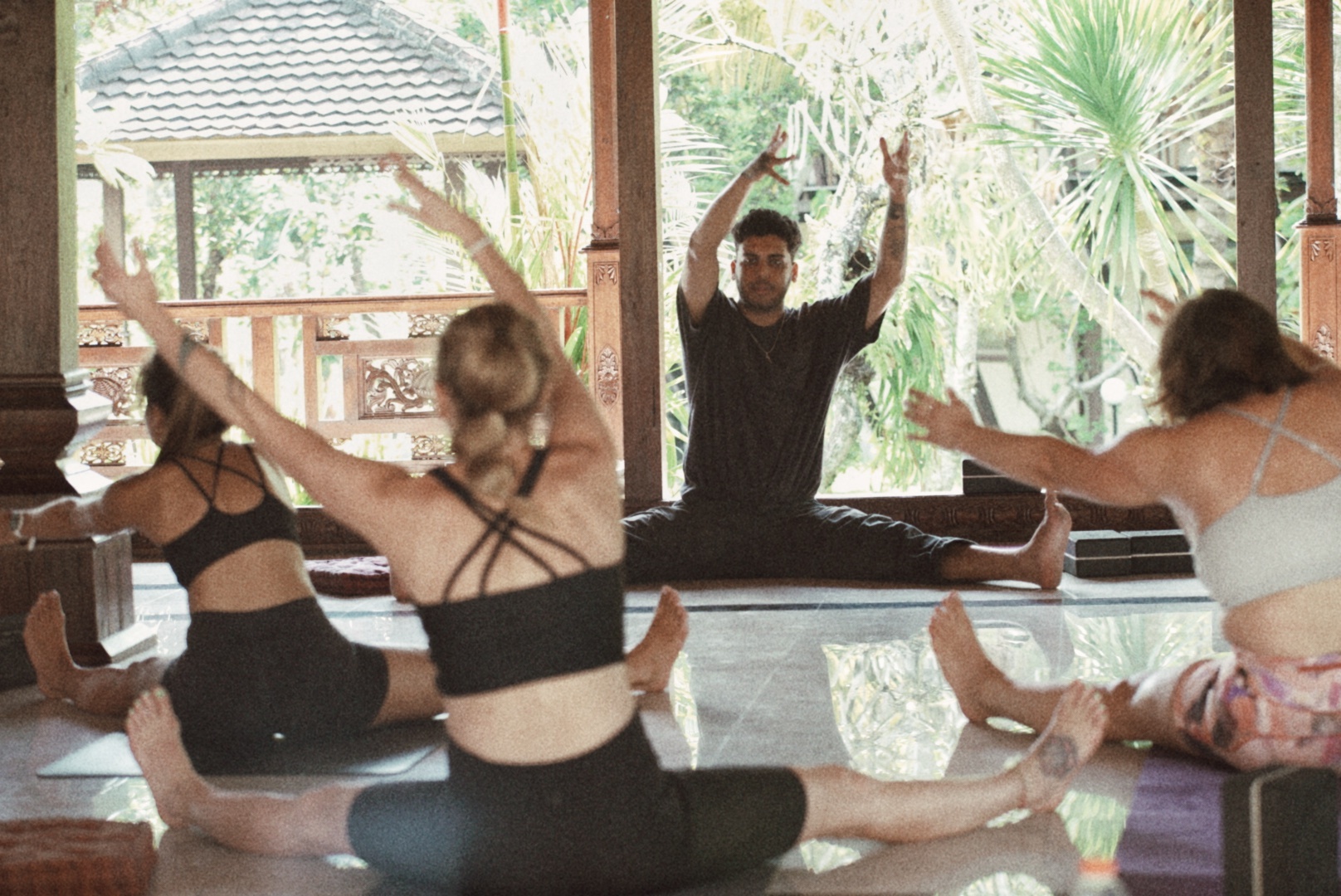


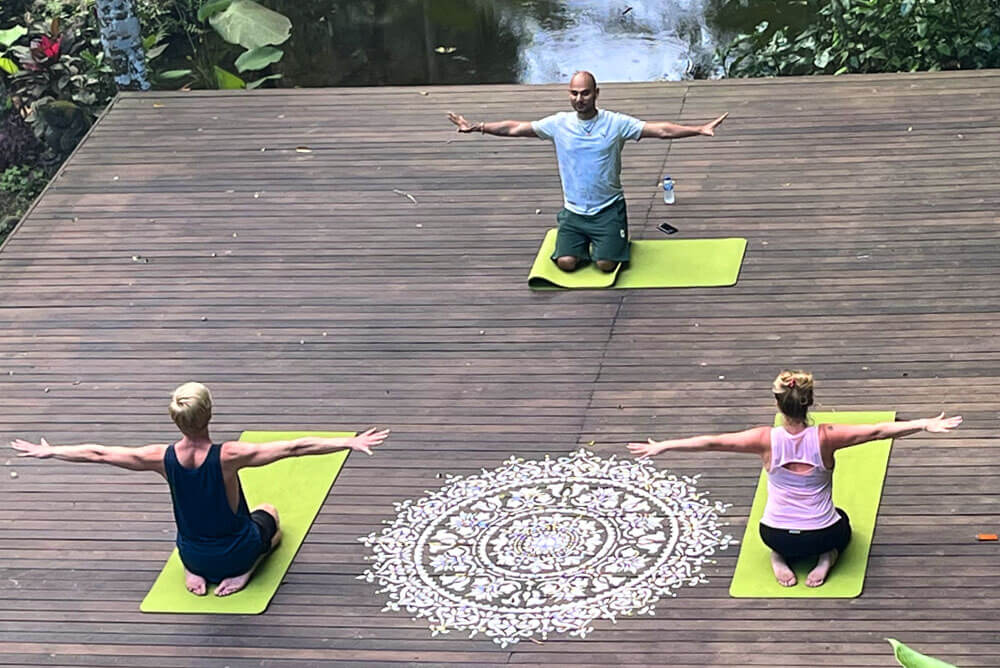

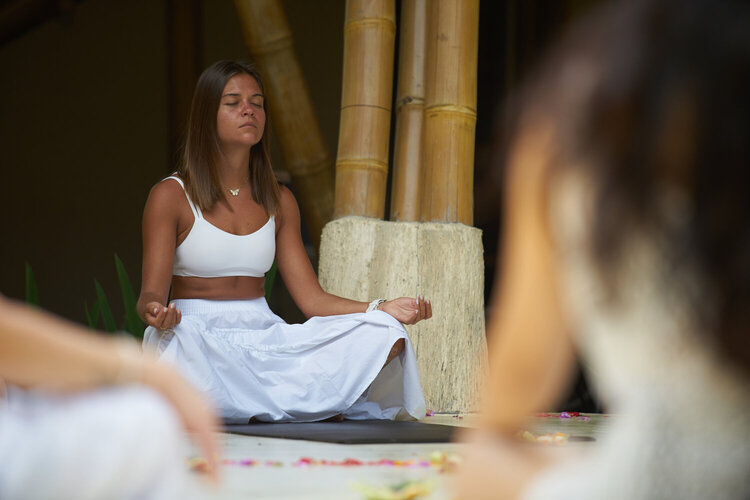


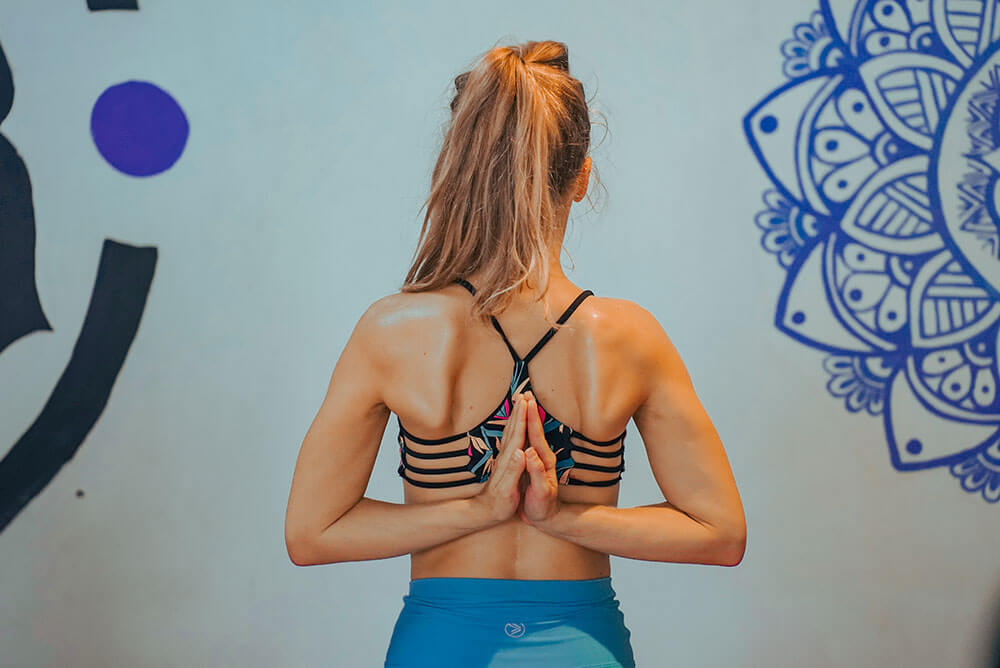



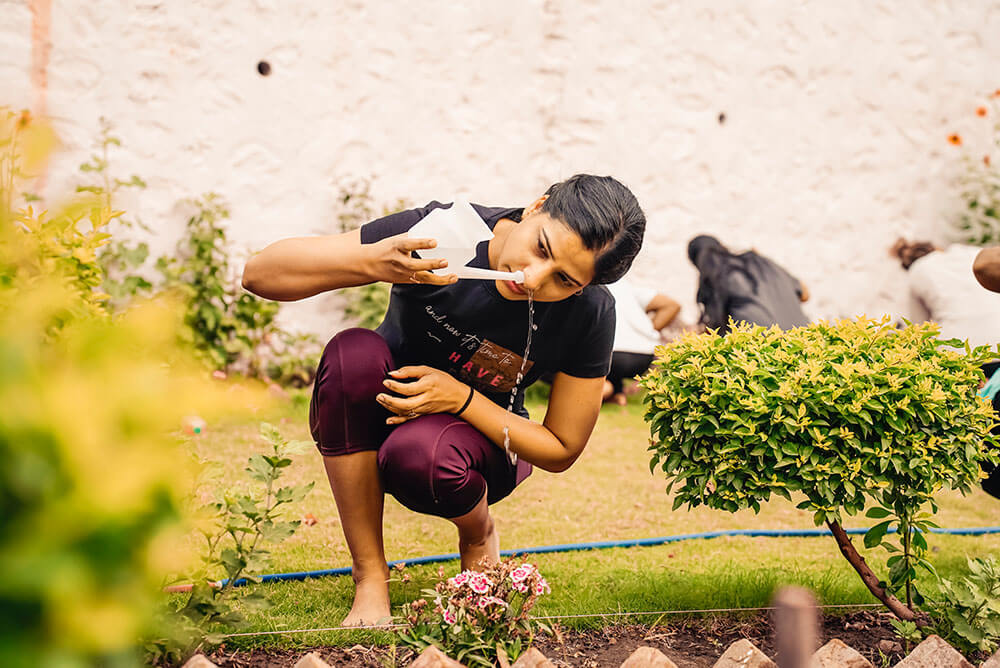

.webp)
.webp)
.webp)
.webp)
.webp)
.webp)
.webp)
.webp)
.webp)
.webp)
.webp)
.webp)
.webp)
.webp)


